By Anna Betz for Enlivening Edge Magazine
I have been asking myself: “Why am I so interested in a social movement in health and social care? What is it that motivates and inspires me?”
The answer is quite simple. It is this vision: I am working for the creation of a healthcare system where all stakeholders are actively involved in health creation and prevention of disease, where professionals, patients and communities co-produce health and create a vibrant culture, where food is understood as the most natural of medicines, where information flows freely, and where compassion is nurtured.
I feel a readiness to do something but I also know that a social movement needs a proper structure to support it and make it sustainable. That structure cannot be imposed from the outside nor from the top down. It needs to emerge from within networks, from the interplay among all parts through meaningful conversations and interactions. Helping this new healthcare system come into being is the reason I energise the roles of Health Section Editor and Community Builder for Enlivening Edge (EE).
As an online magazine and community hub, EE supports organisations and initiatives inspired by the next stage of human consciousness. The next stage builds on and integrates a healthy variety of all preceding stages of consciousness and the management paradigms guided by them, including the Green and Orange shown on the diagram below.
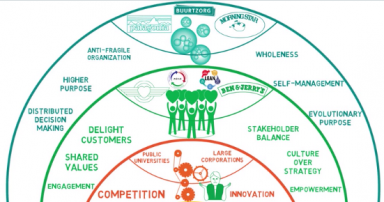
The presently dominant Orange paradigm relies on the atomization of and competition among individuals, the compartmentalization of our bodies which are thought of as operating like machines, and the false hope that rational science will eventually come up with all the answers to our health and social problems.
We know that we are operating from a next-stage consciousness (illustrated by the color teal on the diagram) when we are discerning and appreciating the unique contribution of each part to the whole, and see how they relate to and can synergise with each other.
I have worked in the UK’s National Health Service and in Social Services for many years—while also working outside of it in the community where I lead interactive workshops using my knowledge and experience as a professional in Herbal Medicine. Thanks to those experiences, I understand the tension between the conventional model of medicine, which is reactive and prescriptive, and the many complementary approaches which engage and treat patients as unique and whole human beings.
In my view, unless professionals start modelling healthful behaviours and learn how to access and engage patients and communities as the most important, renewable and abundant resource for healthcare, the purely reactive approach of our present Health Service is clearly unsustainable. A fire-fighting paradigm just cannot meet the complex needs of an increasing number of patients suffering from one or more preventable diseases like burnout, chronic fatigue, diabetes, heart disease, or dementia.
The calls I hear from different organisations and initiatives are for a more participatory approach, co-production of services, treating the whole person, co-producing health, demonstrating compassion in health and social care, working with rather than against nature, and a need to use resources sustainably.
There certainly is no one single initiative or organisation, and in my view there cannot be one, which has the whole picture of what a healthy healthcare system in the future would look like. It needs us all to come together and listen to each other from a place that includes much more than our narrow self-interest, before we can inspire and mobilise others. This is where learning and practising to act from a Teal perspective is most powerful in my experience. EE’s 10-word definition of what Teal is: sensing, thinking, acting, beyond the small self, with increasing frequency.
Some questions very much alive for me are:
How can the potential synergies between different groups and organisations which are in different stages of their work’s maturation be implemented in practical actions?
How can Enlivening Edge create experiential opportunities to enliven innovative collaborations in health & social care with projects created in community?
For example, The University of Westminster and the College of Medicine have launched the Social Prescribing Network, a forum which brings together for the first time healthcare professionals, voluntary and community sector professionals, commissioners, policy makers and patients.
How can we help create an alignment between organisations and initiatives which promote a participatory approach?
How can we create the enabling conditions for a powerful social movement to galvanise people’s passions, and to coordinate activities?
What do we need to do next to coordinate our activities and become a lasting and self-generating force with a shared sense of identity?
Here is where Meg Wheatley’s insights from decades of experience with creating social movements can become very valuable. Understanding the three stages of how life creates radical change and takes things to scale helps me to understand what conditions we need to create in order to launch a social movement, one that can mobilise citizens and communities to lead social action for health.

I heard Meg once say: “It is not about a critical mass but critical connections”.
Sitting in the audience, I felt as if I had suddenly been struck by lightning. This essential insight stayed with me ever since.
In her essay on the Life Cycle of Emergence Meg describes some of the enabling conditions for weaving together existing groups and projects. She describes Emergence as the way life creates radical change and takes things to scale. (3)
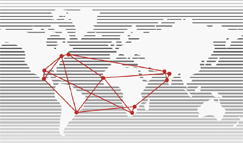 1st stage: Meg talks about “ the 1st stage in the life-cycle of emergence being coalitions, alliances and networks. People move in and out of them based on how much they personally benefit from participating. “
1st stage: Meg talks about “ the 1st stage in the life-cycle of emergence being coalitions, alliances and networks. People move in and out of them based on how much they personally benefit from participating. “
Looking at the UK scenario, I would say that most healthcare initiatives and organizations are at this 1st stage.
2nd stage: The second stage of emergence is the development of communities of practice (CoP’s). “Many such smaller, individuated communities can spring from a robust network. CoP’s are also self-organized. People share a common domain of life or work and realize there is great benefit to being in relationship. They are communities, which means that people make a commitment to be there for each other; they participate not only for their own needs, but to serve the needs of others.
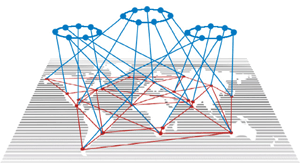 “In a community of practice, the focus extends beyond the needs of the group. There is an intentional commitment to advance the field of practice, and to share those discoveries with a wider audience. They make their resources and knowledge available to anyone , especially those doing related work.
“In a community of practice, the focus extends beyond the needs of the group. There is an intentional commitment to advance the field of practice, and to share those discoveries with a wider audience. They make their resources and knowledge available to anyone , especially those doing related work.
The speed with which people learn and grow in a community of practice is noteworthy. Good ideas move rapidly amongst members. New knowledge and practices are implemented quickly. The speed at which knowledge development and exchange happens is crucial, because local regions and the world need this knowledge and wisdom now.”
Three examples of CoP’s in the field of health and social care in the UK:
- Shaking up the world of healthcare improvement – Helen Bevan
“In a connected world, power no longer emanates from the top of the heap, but the centre of the network.” Greg Satell, 2015
Leading from the edge brings us into contact with a far wider range of relationships, and in turn, this increases our potential for diversity in terms of thought, experience and background. Diversity leads to more disruptive thinking, faster change and better outcomes. Aylet Baron .
What this CoP may contribute to the emergence of a social movement could be to offer masterclasses to an increasing number of health professionals and thus inspire more change movements within the NHS.
2. The Co-Creation network in Yorkshire & Humber consists of a whole network of communities of practice.
This vibrant network could offer their experience and insights more widely and support the
starting of similar initiatives in and across NHS organisations.
3. Leading Change across System Boundaries Health Innovation Network South London
Since this CoP operates in London where there is a large number of NHS organisations, maybe it could crosslink with other health organisations and help develop cross-borough CoP’s around a particular focus.
3rd stage: Systems of Influence
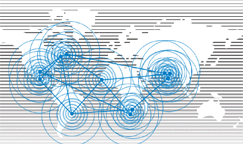 “The third stage in emergence can never be predicted. It is the sudden appearance of a system that has real power and influence. Pioneering efforts that hovered at the periphery suddenly become the norm. The practices developed by courageous communities become the accepted standard.
“The third stage in emergence can never be predicted. It is the sudden appearance of a system that has real power and influence. Pioneering efforts that hovered at the periphery suddenly become the norm. The practices developed by courageous communities become the accepted standard.
“People no longer hesitate about adopting these approaches and methods and they learn them easily. Policy and funding debates now include the perspectives and experiences of these pioneers. They become leaders in the field and are acknowledged as the wisdom keepers for their particular issue. And critics who said it could never be done suddenly become chief supporters (often saying they knew it all along.)”
“On their way to become a system of influence, a real force capable to cause the much needed change in our health and social care, the various groups, projects and organisations need each other to develop their collective sensing into what the new reality of caring and healing could be.”
That collective sensing requires collective sensing organs for the next-stage health and social care initiatives, similar to what Enlivening Edge is for the whole “next-stage” ecosystem. Only then shall we become more aware of our collective potential influencing transformation in the health and the systems.
When people and projects become visible to each other and aware of each other’s work and visions, then better individual and collective sensing becomes possible. From this practice new ideas and innovative projects can emerge that can model what a healthier healthcare system would look like.
Moving healthcare out into the community will be challenging.
- It needs social organizing, facilitation and confidence-building. since people have been conditioned to think and act as individual, isolated consumers rather than co-producers and stewards of their own health.
- It will also require health and social care professionals to behave in ways that enable co-production and self-care instead of acting in a prescriptive manner which is disempowering and creates dependent consumers. This would require training in the principles of co-production and ongoing coaching.
- It will also mean to move from top-down power hierarchies towards organizational models that encourage and enable participation and co-production of services. The values and beliefs informing top-down power hierarchies are contradictory to those informing co-production.
The good news is that the potential for a social movement to transform health and social care in the UK is already present in many different initiatives and groups, and it is growing very fast. I described a small number of initiatives in this article in the Holistic Health Journal in 2015. They all model a common theme of a relational and co-productive approach which includes the practice of social prescribing using non-pharmacological interventions for health and healing. (11)
What is a “social movement,” in light of Meg Wheatley’s three stages? “There is no single consensus definition of a social movement. Mario Diani argues that nearly all definitions share three criteria: ‘a network of informal interactions between a plurality of individuals, groups and/or organizations, engaged in a political or cultural conflict, on the basis of a shared collective identity’.” https://en.
Unless a social movement as a network develops into communities of practice it cannot become a system of influence. Communities of practice are of vital importance because through them, people grow the necessary capabilities and structures that enable a new system to emerge—not as a social movement taking over institutions by force, but by growing into a System of Influence and thus becoming the new mainstream, making old structures obsolete.
Already networks and communities of practice in health and socialcare are growing capabilities and capacities for addressing challenges in a way that old structures can’t; because they are not hierarchical, they can be more innovative and responsive to people’s needs.
In conclusion, I think it would be wise to start with creating the enabling conditions for change before starting the change itself. These are the ones I can think of and would be happy to discuss and co-create with you:
- Collective sensing into what else is possible. What is the new reality of caring and healing we sense?
- Identifying and sharing practices which support transformational journeys
- Creating a shared vision by shifting awareness from personal and individual groups’ experience and perspectives to the experience of the whole as an eco-system of practices, projects, and initiatives
- Working with dissonance and conflict in creative ways. Often, deep coherence and alignment arises paradoxically when a group is able to articulate its differences, obstacles, or struggles.
- Understanding and appreciating the very unique contribution of each part to the whole ecosystem, seeing how they relate to each other and how they synergise and can benefit each other. Seeing, discerning and strengthening the synergy between the parts, and understanding what is specific about each contribution to the whole.
- Discovering our evolutionary purpose by enquiring into questions like: What is our reason for being, our unique contribution to the future in need of us?
- Co-producing guidelines that help us translate our purpose into assessments, practices, decisions and behaviors. Agreeing how we want to relate with one another as we work together in service of a shared purpose.
Let’s explore together what strengths and weaknesses would become visible if the new initiatives, the new models of healthcare would look at themselves in the mirror of the three breakthroughs documented in Reinventing Organizations, by Frederic Laloux: wholeness, evolutionary purpose and self management.
Last but not least, let’s be mindful of the fact that the more the NHS moves towards a corporate structure, the faster we will experience inequalities in health and social care. We need to remember that at the heart of the ordinary corporate structure is the mandate to maximize returns for shareholders, even if this means sacrificing the prosperity of local communities, the well-being of the citizens and employees and our natural environment. So let’s not wait, but start now to create a sustainable, collaborative and integrative health care system.
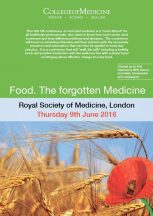 With the recent Food, the Forgotten Medicine conference hosted by the College of Medicine, we have already experienced how successful we can be in mobilising patients, citizens, and professionals from the whole diversity of health professions and together create a buzz for change that matters to all of us.
With the recent Food, the Forgotten Medicine conference hosted by the College of Medicine, we have already experienced how successful we can be in mobilising patients, citizens, and professionals from the whole diversity of health professions and together create a buzz for change that matters to all of us.
Imagine how we could galvanise a powerful social movement by bringing together the various groups and organisations that already operate from a new paradigm informed by systemic thinking, wholeness, self-care and preventative healthcare.
If you are in the business of growing and/or selling of food, or are a leader of a community organisation working to grow healthier communities, or a health professional either in the NHS or outside of it and active in working with self-care and prevention, or a fund-holder or commissioner serious about holistic health, or a tech-savvy person or another member of society ready to offer time, skills and energy for the purpose of creating a healthy healthcare system, please get in touch.
References:
(1) https://vimeo.com/121517508 as identified on 5th August 2016
(2) http://www.skyandtelescope.com/astronomy-news/gravitational-wave-detection-heralds-new-era-of-science-0211201644/ as identified on 5th August 2016
(3) http://www.margaretwheatley.com/articles/emergence.html as identified on 2nd August 2016
“Emergence is the fundamental scientific explanation for how local changes can materialize as global systems of influence. As a change theory, it offers methods and practices to accomplish the systems-wide changes that are so needed at this time. As leaders and communities of concerned people, we need to intentionally work with emergence so that our efforts will result in a truly hopeful future. No matter what other change strategies we have learned or favored, emergence is the only way change really happens on this planet. And that is very good news.”
 Anna’s background is in Health and Social Care with training in Herbal Medicine, Socialwork, Mindfulness Practice, Transparent Communication, and Systemic Family Therapy. She practices a pro-active evolutionary approach to Health and Wellbeing and leads on projects in the UK National Health Service using Mindfulness and diet for people suffering from chronic inflammatory diseases like diabetes and dementia. Her passion for building thriving and sustainable communities inspired her to co-found the HealthCommonsHub. She feels at home in places where individual, communal, organisational, and social evolution meet, and where people support each other in becoming whole and feel enlivened.
Anna’s background is in Health and Social Care with training in Herbal Medicine, Socialwork, Mindfulness Practice, Transparent Communication, and Systemic Family Therapy. She practices a pro-active evolutionary approach to Health and Wellbeing and leads on projects in the UK National Health Service using Mindfulness and diet for people suffering from chronic inflammatory diseases like diabetes and dementia. Her passion for building thriving and sustainable communities inspired her to co-found the HealthCommonsHub. She feels at home in places where individual, communal, organisational, and social evolution meet, and where people support each other in becoming whole and feel enlivened.
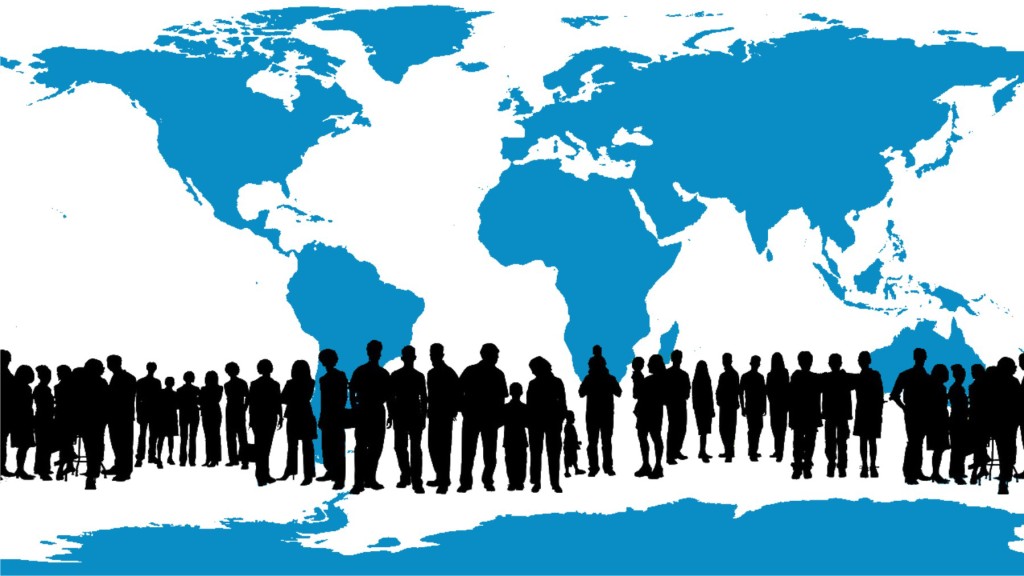


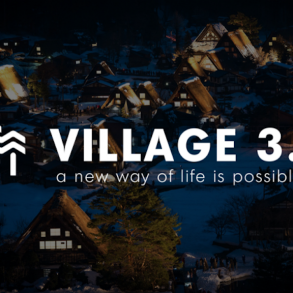
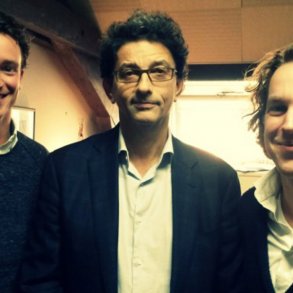
Great article Anna. When I read the list of people you are seeking it reminds me of fantastic people I have had the privilege to work with across the system. One NHS team in particular dealt with food and health and as well as the weight management advice it was obliged to give it also did things like take over some allotments working with local communities to grow food which they then cooked and ate together. The grow, cook, eat method passed on new skills and helped some people rediscover cooking food from scratch skills leading to a healthier diet and stronger community relationships. They also took over a stall in the local market in the summer holidays doing healthy cookery demos which were really entertaining and gave people confidence to try real cooking. http://www.southwestyorkshire.nhs.uk/our-services/directory/community-food-health-team/ The last time I spoke to them they were concerned about their future as budget battles between Local Authorities and Health questioning whose responsibility this type of work is, was putting the service at risk. I think this is maybe a example of the pressures of corporate structures you are talking about? I’m also aware of movements such as the Real Junk Food projects and guerrilla gardening that have has a huge impact in some cities. I think a Healthy Healthcare System, whatever that turns out to be, will recognise all the aspects that contribute to a healthy, happy and worthwhile life and exist within a bigger complex system which connects all the elements which enable this. We are seeing acknowledgment of this already where housing, employment/meaningful activity, social connection, healthy environment and spirituality are all being recognised as part of preventative, recovery and well being work and there are some fantastic examples of creative and inclusive work in these areas. The systems and some of the organisations within it are struggling with the challenges this way of thinking and working present. After all, we would expect these organisations to seek to survive and their response is perhaps best understood in this context . Perhaps the big change will happen when the big organisations accept that they will only survive as part of the emerging system if they too can embrace these new ideas and evolve their ways of working?
Thank you, Anna, what a great article! Reading it, I felt the same, as when I read the articles by the editor of the Annals of Family Medicine, Kurt C. Stange in 2009 writing about holons, holarchy, the science of connectedness etc. [1] I consider your article as Health Section Editor of the same importance for future thinking.
Everywhere I also see the emergence of health synergy spaces for human flourishing and thrive ability where citizens/commoners show their passion and vision for (sustainable) health & well-being by synergistically co-creating and ‘making’ health with others, instead of (only) consuming health services as a patient/consumer.
I clearly feel that our initiative in the three Northern Provinces of the Netherlands is connected with your initiative in the London region. We are also connected by global common health resources, to be stewarded by all these synergy spaces of the Global Commons, where we talked about in 2014 during that Global Health Conference in Berlin [2] . Life is a mystery and a paradox. We’re all connected, as a new form of “integral” or “holistic consciousness is emerging.
These initiatives can also be seen as (part of) a living social system and as a conscious evolution beyond teal, self organizing from wholeness and a holonic point of view. All these new spaces need to be connected into a global network of health synergy spaces, as (a) a global brain and collective health intelligence & wisdom together with (b) a global computer in terms of a blockchain enabled individual and collective health co-creation engine. At present I’m part of the Noomap team working on some great things to come in this field [3]
We need a new language and a new narrative for this collective synergic co-creation of health. We need to create a new meta layer for health and health services. I would welcome it if Enlivening Edge and its health section would become the vessel to help give birth to such new health synergy spaces and its global network, with social and IT offerings.
I love your reference to the work of Margaret Wheatley and I agree with the place and role of Systems of Influence. Your list with enabling conditions resonates deeply with me. In short, I would love to be part of your creation space for a social movement crafting a new meta-narrative and meta-layer for health [4]. Be well and give my love to George.
Henk
[1] http://www.annfammed.org/content/7/5/387.short
[2] http://www.health-and-globalisation.org/archive/2014/global-health-conference/schedule-conference.html
[3] http://noomap.info
[4] http://edgeperspectives.typepad.com/edge_perspectives/2014/09/making-a-movement-narratives-and-creation-spaces.html
Thank you Jane for your valuable observations and reflections. I just want to say how much I appreciate that you are helping to bring this conversation alive. It demonstrates the power collective intelligence because without your comment I wouldnt be able to address the questions. The wisdom that can emerge is held not in me or you but in the interaction. This kind of interaction is the prototype of the movement I dream to galvanise. The movement depends on people caring as deeply as you do and listening from beyond what we already know or what serves our own agendas.
Before we can move the conversation towards actions and solutions, we need to listen deeply from this place of caring and compassion.
Listening to each other without thinking we know the answer already but coming together because we truly care and listen from that space we can celebrate our connections.
My own experience is that innovation within the existing system is very slow. I think this is due to a large extent because listening is not happening. The value of it is not appreciated enough as a space where the future can already start to happen by presencing it with each other. There is a lack of trust within the system in anything unconventional. This is partly due to the way services are commissioned. Hopefully the new post that NHS England is creating for social prescribing will help to change this.
I just came across this article on the Kings Fund website which draws attention to Mindfulness practice as an important aspect in regards to enabling the opening of minds and hearts. It certainly helps me to connect my head to my heart and aloows me to go deeper with my intention and what I give attention to.
http://www.kingsfund.org.uk/blog/2014/01/what-mindfulness-has-offer-health-and-social-care
“One of the things I love about mindfulness is its counter-intuitive nature. People often say they don’t have time for mindfulness; however, mindfulness practice can speed things up, or perhaps more accurately it can help us to use time more wisely. An operations manager told me how he used mindfulness to transform their team meetings. He now begins each meeting reminding colleagues of the purpose of the meeting, inviting people to do short breathing exercises and to focus fully on the purpose of the meeting and the people present. The meetings now run on time, people attend, decisions are made and there is a sense of satisfaction within the team.
Health care commissioners will need to deliver a sustainable system in the face of the most challenging financial and organisational environment seen in decades.”
Another article on the same website also highlights the importance of prevention:
“We must shift the current emphasis on acute and episodic care towards prevention, self-care and integrated and well co-ordinated care to cope with an aging population and increased prevalence of chronic diseases. “http://www.kingsfund.org.uk/publications/articles/transforming-our-health-care-system-ten-priorities-commissioners
When diverse groups come together with the intention to collaborate and co-create a more sustainable and enlivening future, we must learn to listen deeply to the future that can and wants to emerge through our interaction. the spaces where we can really learn this is in my experience the Communities of Practice.
By the time I finished my reply, I already found Henk’s reply who I am sure would love to be part of this as well. It seems there is certainly energy for TEAL practice in health and socialcare.
Would you both have energy to form a community of practice?
Anna, I just read your thoughtful response to Jane, and I fully agree with what you have said about mindfulness, deep listening, prevention etc. I would love to form a community of practice with you and others, a safe place without hidden agendas, a place of co-creation for the common good, where trust emerges with deep dialogues. I would like that and I have the energy to take part. Let’s explore how we can create channels of communication in the real and virtual world across the North Sea. Let’s also explore if you can come over here to tell your story and experiences to our group and to get acquainted. We also adhere to the Art of Hosting and Otto Scharmer’s Theory U approach etc.
What a great idea Henk. I would love to get acquainted with your group. I am wondering whether it would be a good to invite Helen Sanderson along who would like to shadow some of the care workers working Buurtzorg style. I actually would also be interested in what way they operate differently.
Anna, Henk and Jane, I am new to this gathering movement but it is something that I care deeply about and have some small interest in as a director of a charity that works with the NHS in a specific area. I will be meeting with Jane I hope in Leeds towards the end of September and for me this is about starting to find out what is already happening that myself and the company I work with can start to tie into. Personally as a coach and a caring human being I am also interested in the power and uniqueness of individuals and how change can – must – be driven from the desires of people. I would very much like to help with these ideas of a COP and add what little knowledge and skills I have into the mix.
Henk, Mike, Anna and Jane – Following through the conversations above, you could extend your learning into the field of “positive deviance” as practised by the Sternins and the Positive Deviance Initiative. We are teaching it in the UK, and it has been used world-wide for significant behaviour change within limited resources.
An example is reducing hospital acquired infections in the USA and across the Americas, accelerating work being done through Lean, and in building community resilience and co-operation in the UK without “doing to” people. It is a kind of group coaching that starts with initiatives like the ones Jane mentions, but which then goes further, to find ways to challenge negative practices (e.g. FGM) by showing that it is possible to be successful/chaste etc without recourse to these. The next step is to invite everyone to create new networks and discover successful ways of working/being that already exist, hidden in plain sight. This bottom-up approach is also somewhat threatening to large organisations, but is a great way of reducing demand for services and creating confidence and independence. Have a look at http://www.positivedeviance.org.
We’ve adapted it because it needs more groundwork and preparation with leaders than is clear in their model….. But it is all about the power and uniqueness of the individual, and how to create a process and environment where this can be celebrated and optimised. The coaching/facilitation skills learned fit nicely with the Buurtzorg model.
Dear Mike, thank you for joining this conversation and showing interest in creating a CoP. Caring deeply is one of the most important enabling conditions for change. It can gift us with necessary insights, courage and compassion to meet challenges. May I ask you what charity you are a director of?
Dear Jane,
Thank you for reading through this conversation and extending it to include Positive Deviance in addition to the more well known methods of Appreciative Inquiry and Coaching. PD is truly an important, often overlooked and undervalued resource both in professional environments incl within teams and their members as well as within communities and within patients and their families.
It is also giving a name to what many people including myself are already doing in different places everywhere without being necessarily acknowledged for it. Whatever we give our attention to will grow. Thank you for bringing your gifts to this conversation.
I love your term: ‘Creating Communities of Capability’ and agree with what I read on the website you provided and here: http://www.hiddeninsights.co.uk/resources/articles-white-papers/
You also say in this article http://www.hiddeninsights.co.uk/2016/09/positive-deviants-and-heroes-the-same/:
“It is vital to engage leaders, to create the space for people to explore and experiment with ideas which are threatening to the status quo. Those, whose behaviour is the norm, learn from evidence and stories why and how their current behaviour is harmful. They learn that the different behaviours are not dangerous, and in fact far more beneficial. “Normal” community members volunteer to learn how positive deviants perform better. They observe and note what they do and how they do it, and then create ways for their peers to learn.”
This is absolutely true. I experimented with that myself in my team. It works in ways I couldnt have predicted. I learnt that showing up in a coherent and consistent way and being trusted because of that plays a crucial part in eventually enabling the culture to change.
You also say: “…. the need to network and support the emerging positive deviants. We encourage the creation of networks, both to support learning and to create positive relationships that sustain behaviour change. The exceptional practices are screened to ensure they are not only accessible to all but benefit all. So I guess we are all heading in the same direction. We believe in the possibility of a better way, the good that is hidden below the surface of communities. We support the creation of an environment where mutual care and compassion can flourish.”
Collective intelligence and wisdom is amplified when people and their practices become visible to each other, when they share what they know and enquire together into what they dont know yet to allow new ideas and practices to emerge. I really appreciate your contribution here.
My question is what is our work together now that we know that we all care deeply about the future of healthcare and feel called to build a health sector where relationships, continuing improvements and sustainability matter.
Besides becoming more effective, resourceful, innovative and sustainable what do you feel deeply called to do next? What moves, touches and inspires you so much that you feel called to action into that direction? How could this small group support you in that?
Reading your articles helps me to sense someone who cares deeply about the common good and has tasted the possibility of a better way.
Looking forward to connect with you.
in the spirit of our co-evolution
Anna
[email protected]
Hi Anna, so good to read your great article Anna. I would like to further develop the vision on stimulating the growth of social movements / emerging systems. I feel the experience of Meg Wheatley is hardly known as is deep system thinking. May I suggest to make the lonk with Teal for Teal in the north of the Netherlands. I know a couple of there from different background wanting to start a Community of Practice. Henk Hadders could you contact me please. I’m also very interested to discuss the use of IT.
Dear Stefan, Great to hear about your interest in a CoP. Are there folks in Teal for Teal working in and interested in transforming health and socialcare? It would be great to link their work with what Henk is doing as well.